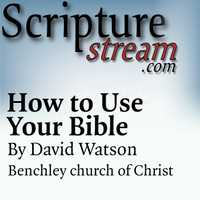- Translation philosophy, continued:
- Dynamic (thought-for-thought, functional equivalence), continued:
- Attempts to retain the meaning of the text, including idioms
- Amos 4:6 – “cleanness of teeth” (NASB)
- Luke 15:20 – “fell on his neck” (KVJ, ASV, NKJV)
- I Corinthians 9:16 – “necessity is laid upon me” (ASV, ESV, NKJV, KJV)
- Luke 1:33 – “into the age” à “forever”
- Psalms 17:8 – “pupil of your eye” (CSB)
- I Timothy 5:22 – “laying on of hands” (NASB) vs “appointing a church leader” (NLT, CSB)
- Language tends to be more readable and flow more naturally
- Attempts to retain the meaning of the text, including idioms
- The best strategy is to compare several translations.
- Top recommendations: NASB, ASV, ESV, NKJV, KJV
- Dynamic (thought-for-thought, functional equivalence), continued:
- Context and harmony
- Exodus 32:19 (ESV) – Moses “broke” all ten commandments at once! What does “broke” mean? Context means reading the surrounding verses to help you understand what a word or phrase means.
- “Logos” in the NASB is translated ten or more different ways.
- Galatians 6:10 – “let us do good to all people” – What kind of good is being talked about?
DW
December 13, 2017
For further study, see also:
Questions or comments? Join our Discord server for further study.
